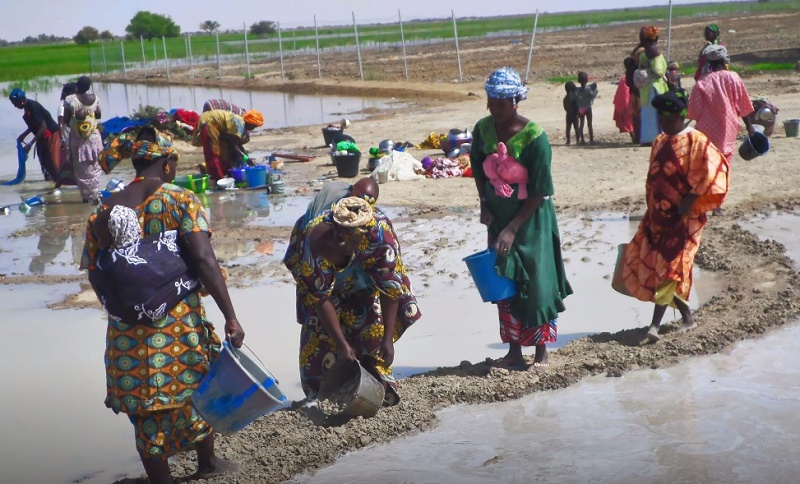Michaela Larson, Start Fund Monitoring, Evaluation, Accountability and Learning (MEAL) officer discusses the value of cash in crisis response.
The humanitarian question of “how do we help the world’s poorest populations become more sustainably resilient, either due to a crisis or chronic poverty?” is an obvious one – we give them cash.
Over the past twenty years, cash programming has become a standard response in humanitarian crises and sustainable international development. Cash-based programming started in Latin America, but mainly in Brazil during the late 1990s – it was used for both immediate crisis and long-term projects. Aarhus University also published a report in 2012 and highlighted the use of cash transfers and their effectiveness in Brazil. It has contributed to decades of research which clearly illustrates that people who need money will spend it only on items they require or invest it for their future. The Independant Commission for Aid Impact reviewed the use of cash transfers which told us that people who receive money are spending it on items they need.
Thus, another question arises – if the answer is so obvious, why hasn’t this been the modus operandi since the beginning?
That seems to be where this all gets a bit sticky. Our main ethos at the Start Fund is finding ways to challenge the humanitarian system. We want responses to be more effective and timely in reaching people affected by crises. The aid sector has been slow to respond to crises because of the global, political and economic power dynamics that exist within it.
Cash programming has had to go through decades of research to illustrate that it is effective as an aid response, because explanations on the security and risk have been used to minimise the growth of cash programming. This dangerous hypothesis has held back innovations within the aid sector in project design and implementation. It tells us how important it is to challenge the underlying industry assumptions – they can pinpoint fundamental flaws to the sector which can then be changed or eliminated entirely.
How does the Start Fund use cash projects in crisis?
Cash projects are now part of Start Fund proposals and project implementation when responding to crises’. People are able to maintain dignity and normalcy by using cash transfer programming when they are affected by crisis, such as displacement or natural disasters. Since Start Fund’s inception, 26% of proposals incorporated a cash element to the project implementation. The Start Network has published a learning document to help improve decision making at the project, crisis and system level.
There are a variety of cash projects, some are voucher-based, conditional cash schemes, or most commonly, unconditional cash transfers (UCT). Given that the Start Fund response cycle must follow a 45-day timeframe for responses, UCTs are the fastest way to reach people affected by crises. It gives them the flexibility and resources to become stable. They can spend the cash on food, non-food items (e.g. blankets, kitchen items, clothing) or shelter as well as long-term investments like children’s education or medication. Many beneficiaries recommend UCTs in the future because of the success they experienced with it.
Do we need to use cash programming with other forms of aid?
Although cash is overwhelmingly a successful form of humanitarian response, it comes with its own caveats. A recent learning exchange by a Start Fund hub in response to flooding in Bangladesh flagged an interesting point. When providing UCTs, we should also distribute sanitary napkins or dignity kits to households with young women, as the needs of this population were low priority.
Similarly, during a drought in central America, Oxfam altered their response to meet the needs of the population that was affected. Previous cash projects showed households were less likely to buy fortified flour supplements as it was more expensive and not a product they would usually buy. So, Oxfam handed out flour with their UCTs.
Challenges to cash programming
Other interventions have incentivised behaviours through cash to have more sustainable outcomes, such as building sand banks to prevent future flooding (Alert 42 India – Flooding). Overall, the main challenges to cash projects are not around what people spend the cash on, but rather how to get the beneficiaries the cash.
- Physically handing out cash without theft
- Can the cash be transferred to bank accounts?
- What about the people who don’t have bank accounts
- Vulnerable people (e.g. elderly or disabled)
Logistical challenges like the above have all been reported, but at minimal levels compared to the overall successes of cash programming.
Cash programming has had to overcome major hurdles for its successes to be recognised rather than its failures. Even with the evidence overwhelmingly in favour, there are still poorly informed critics misunderstanding the concept, implementation and outcomes. Media outlets, such as the Daily Mail, have openly published news which counter the argument for using cash programming. As the system learns to tweak and adjust cash programming to meet the greatest number of needs to the greatest number of people, the conclusion is clear – cash works.

